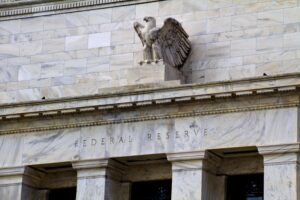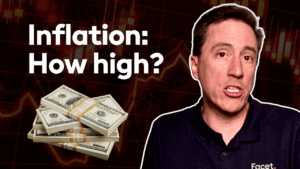Learn library
Discover our approach to personal finance through our library of free articles. Gain the financial knowledge you need to enrich every facet of your life.
Explore by topic
Career Changes
Resources for everything from navigating open enrollment to starting a side hustle. ViewFinancial planning & wellness
Get guidance on budgeting, saving, and building a plan that supports your full life — not just retirement.

What is an emergency fund?
An emergency fund is designed to be a safety net for “surprise” expenses. Learn more about what it is and why it is important.

A year-end financial checklist: 2024 complete guide
Critical financial moves to make by year-end to help you save on taxes this year and enjoy a more financially successful 2024.

How lower interest rates affect your money and what you should do now
The Federal reserve just lowered interest rates for the first time since early 2022, and all signs point to additional interest rate cuts in the months ahead. But how low will they go? More importantly, what do lower interest rates mean for your money and what actions, if any, should you be taking today? With plenty of opinions circulating in

Why everyone needs an estate plan
Imagine what would happen if you, or someone you love, gets hurt, sick, or even worse, if there’s an unexpected loss of life? Now imagine how you’ll feel when you know that you’ve put a plan in place to make sure that you, everything you work so hard for, and the people you care about most will be OK no

Open Enrollment Guide: How to Choose the Right Benefits
Your once-a-year opportunity to analyze your benefits and make the choices that will be best for the coming year.

Dual Power of Attorney Explained: Benefits & Key Considerations
Discover the benefits and precautions of creating a dual power of attorney to protect your health and financial affairs, with tips on designating agents and monitoring their actions.
Navigate your finances confidently with a team of experts guiding you every step of the way.
Investing
Find articles to support your investing goals, including short and long-term strategies.

Israel-Iran conflict: A guide for U.S. investors amid market uncertainty.
The recent conflict in Iran has understandably put investors on edge. But what might the actual economic impact of this conflict be? Does it suggest any portfolio changes? Here are our thoughts in how these events could influence the economy, markets and your money.

When will the Fed cut rates? June meeting points to a timeline.
As was widely expected, the Federal Reserve held interest rates steady at its June meeting, navigating a difficult moment with risks to both inflation and economic growth. While a potential tariff-driven price spike is keeping the Fed on hold for now, a closer look at their projections and Fed Chair Jerome Powell’s comments reveals a clear bias towards cutting rates

Stock market 101: A beginner’s guide
What is the stock market? What are stocks? How do stocks fit into your overall financial plan? Here are some answers.

“One Big Beautiful Bill”: Tax cuts, deficit impact and investor outlook
A significant budget deal, officially titled the One Big Beautiful Bill Act, recently passed the House of Representatives. Investors are already trying to game out how the budget could impact the economy, interest rates and stocks. Here are our views on how this budget could impact your investments.

Got a concentrated stock holding? How to diversify in a tax-smart way
A common problem we see among members is how to handle a single stock that has become too large within their portfolio. It is a good problem to have, but presents a real challenge. Here are some general principles for approaching this, applicable whether the stock is from your employer or simply a long-held investment that has appreciated.

The 2025 tariff shock: Inflation peak, economic risks and Fed’s next move
Recent warnings from major retailers, like Walmart, suggest that price increases related to newly implemented or proposed tariffs are on the horizon. This raises critical questions for consumers and investors: How high could inflation go? How long might these effects last? And what does this all mean for your money?
Facet was ranked #1 Best Financial Advisory Firm 2025 by USA TODAY!
In April of 2025, USA TODAY partnered with Statista to rank the top 500 RIAs. Recommendations were collected via an independent survey among over 30,000 individuals and an AUM development analysis over the short and long term. Self-recommendations were prohibited, and no compensation was provided for the ranking.
Retirement
Explore smart ways to prepare for retirement — on your terms, with confidence and clarity.

Backdoor Roth IRA: What it is and how to do it
Learn what a backdoor Roth IRA is, how it works, and what you need to know to determine if this strategy is right for you.

The Mega Backdoor Roth 401(k): A supercharged retirement strategy
A Mega Backdoor Roth 401(k) is a strategy that can boost your retirement contribution up to $69,000 a year—all through a “backdoor” approach that works around the restrictions of Roth accounts. Instead of contributing directly to a Roth, you can contribute to your 401(k) and then convert it to a Roth 401(k), regardless of your MAGI (Modified Adjusted Gross Income).

Streamline your savings: A simplified guide to consolidate 401(k) accounts
You’ve likely considered merging your retirement accounts before but never followed through. Here’s why it might be a good idea, and how to do it.

The 4 percent rule in retirement: Is this withdrawal strategy still reliable or outdated?
Is the 4% rule still the gold standard for retirement withdrawal strategies? Find out if its a reliable retirement income method and discover alternatives.

Roth Conversions for Retirees: Tax Benefits & Strategies
A Roth IRA conversion in retirement? Sometimes it’s never too late to make a change. Learn if it makes sense for you.

Rule of 55: How to Access Your 401(k) Early Without Penalty
Discover how the rule of 55 can allow you to access your retirement savings penalty-free at age 55. Learn about its pros and cons, considerations, and alternative options for early withdrawals.
See how good it can get with Facet as your financial guide.
Recent Articles

Israel-Iran conflict: A guide for U.S. investors amid market uncertainty.
The recent conflict in Iran has understandably put investors on edge. But what might the actual economic impact of this conflict be? Does it suggest any portfolio changes? Here are our thoughts in how these events could influence the economy, markets and your money.

When will the Fed cut rates? June meeting points to a timeline.
As was widely expected, the Federal Reserve held interest rates steady at its June meeting, navigating a difficult moment with risks to both inflation and economic growth. While a potential tariff-driven price spike is keeping the Fed on hold for now, a closer look at their projections and Fed Chair Jerome Powell’s comments reveals a clear bias towards cutting rates

Stock market 101: A beginner’s guide
What is the stock market? What are stocks? How do stocks fit into your overall financial plan? Here are some answers.

What is an emergency fund?
An emergency fund is designed to be a safety net for “surprise” expenses. Learn more about what it is and why it is important.

The real reason mortgage rates are so high (and why they probably won’t drop soon)
Mortgage rates have remained stubbornly elevated, hovering around 7% for much of the last three years. Many are understandably hoping for rates to drop, whether to purchase a new home or to refinance an existing mortgage. This analysis will explore the key drivers of mortgage rates and offer our perspective on where they might be headed next. The unfortunate reality

“One Big Beautiful Bill”: Tax cuts, deficit impact and investor outlook
A significant budget deal, officially titled the One Big Beautiful Bill Act, recently passed the House of Representatives. Investors are already trying to game out how the budget could impact the economy, interest rates and stocks. Here are our views on how this budget could impact your investments.



